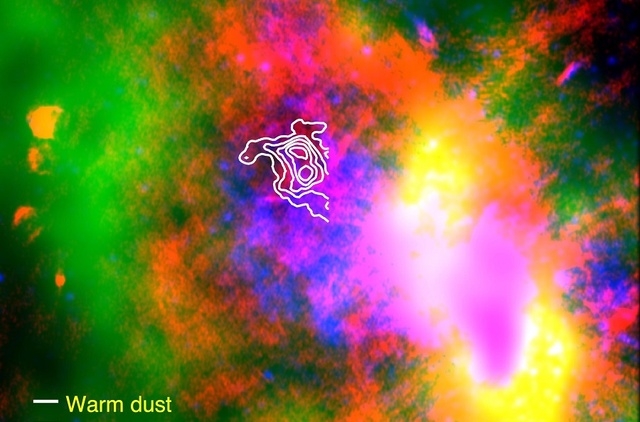Supernova’s dust could make thousands of Earths, NASA says
![]() ITHACA, New York — Dust from supernova explosions survives to serve as “seed material” for new planets, according to a new study.
ITHACA, New York — Dust from supernova explosions survives to serve as “seed material” for new planets, according to a new study.
Researchers have long believed that a significant amount of dust is produced during the first shock wave of a supernova, but before the new study it was not clear whether the dust could make it past a second rebound shock, according to NASA.
A team of researchers used NASA’s Stratospheric Observatory for Infrared Astronomy to demonstrate that the supernova material does in fact live on. They examined the interstellar dust cloud called Supernova Remnant Sagittarius A East.
“Our observations reveal a particular cloud produced by a supernova explosion 10,000 years ago contains enough dust to make 7,000 Earths,” Ryan Lau of Cornell University said in a statement.
By studying infrared images, the researchers could estimate the mass of the dust cloud and detect radiation on materials emitted from the supernova, according to NASA.
“The dust survived the later onslaught of shock waves from the supernova explosion, and is now flowing into the interstellar medium where it can become part of the ‘seed material’ for new stars and planets,” Lau said.
The finding suggests that the supernova explosions of early massive stars could be responsible for “vast” amounts of dust observed in young galaxies. NASA said there is currently no other known mechanism capable of creating an amount of dust that large.
The study was published in Science magazine on March 19.




















